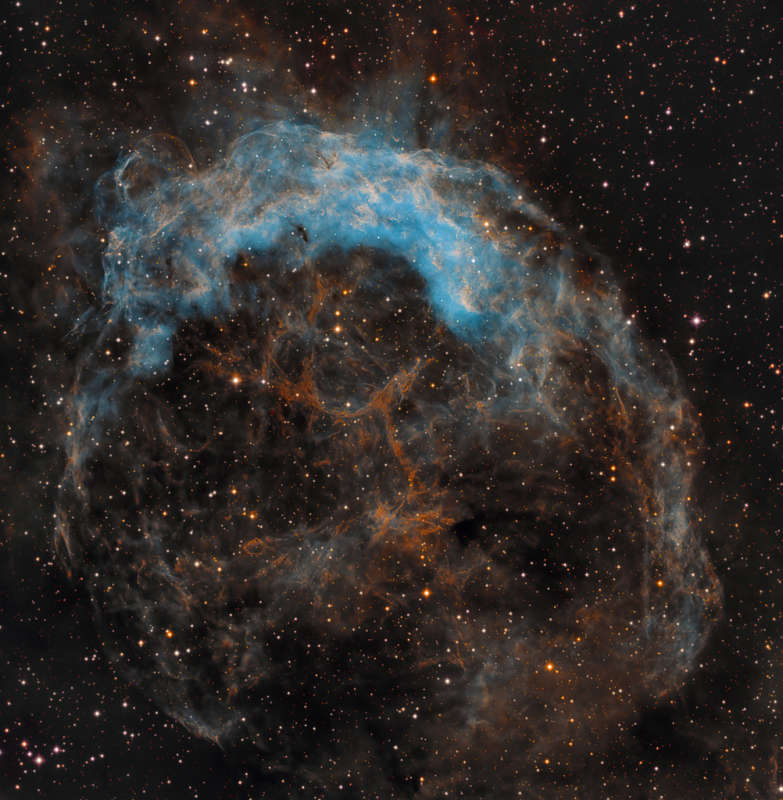Credit & Copyright: Mike Selby
and
Roberto Colombari
Explanation:
NGC 3199 lies about 12,000 light-years away,
a glowing cosmic cloud in the nautical southern constellation
of Carina.
The nebula is about 75 light-years across in this
narrowband, false-color view.
Though the deep image reveals a more or less complete
bubble shape, it does look very lopsided with a much brighter edge
along the top.
Near the center is a
Wolf-Rayet
star,
a massive, hot, short-lived star that generates an intense stellar wind.
In fact, Wolf-Rayet stars are known to create nebulae
with interesting shapes
as their powerful winds sweep up surrounding
interstellar
material.
In this case, the bright edge was thought to indicate a
bow shock
produced as the star plowed through a uniform medium, like a boat
through water.
But
measurements
have shown the star is not really moving directly
toward the bright edge.
So a more likely explanation is that the
material surrounding the star is not uniform, but
clumped and denser near the bright edge of windblown NGC 3199.
1999 2000 2001 2002 2003 2004 2005 2006 2007 2008 2009 2010 2011 2012 2013 2014 2015 2016 2017 2018 2019 2020 2021 2022 2023 2024 2025 |
Yanvar' Fevral' Mart Aprel' Mai Iyun' Iyul' Avgust Sentyabr' Oktyabr' Noyabr' Dekabr' |
NASA Web Site Statements, Warnings, and Disclaimers
NASA Official: Jay Norris. Specific rights apply.
A service of: LHEA at NASA / GSFC
& Michigan Tech. U.
|
Publikacii s klyuchevymi slovami:
Wolf-Rayet star - stellar wind - zvezdy Vol'fa-Raie - zvezdnyi veter
Publikacii so slovami: Wolf-Rayet star - stellar wind - zvezdy Vol'fa-Raie - zvezdnyi veter | |
Sm. takzhe:
Vse publikacii na tu zhe temu >> | |
